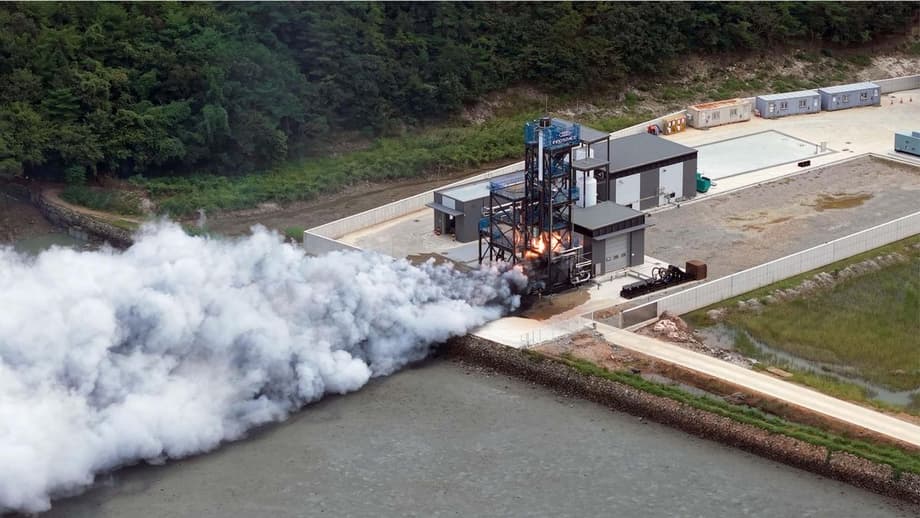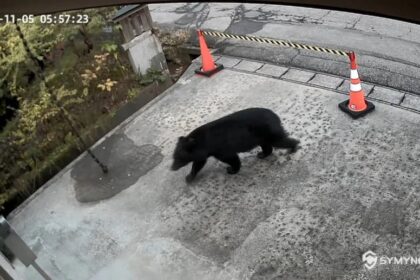Why this launch matters for Korea and Brazil
South Korea is on the verge of its first private orbital launch. Innospace, a young launch provider based in South Korea, has received the first commercial launch authorization ever issued by the Korea AeroSpace Administration for a private company. The mission, called Spaceward, will fly the HANBIT-Nano rocket from Brazil’s Alcantara Space Center in a launch window running from October 28 to November 28. The company has completed the required procedures and has moved into final checks at the equatorial site in Brazil.
The flight carries eight contracted payloads and a single commemorative item. Customers span Brazil, India, and South Korea. Five small satellites focus on climate and environmental data, technology development, and education. Three experimental payloads will test new hardware and will remain mounted to the rocket. A light branding item from the Korean beverage company Brewguru is included to mark the start of Korea’s commercial space era.
The mission is a first on two fronts. It is the first time a Korean private firm attempts an orbital deployment of customer payloads. It is also the first commercial mission by a private company to lift off from a Brazilian space center. Innospace will use a proprietary launch platform at Alcantara, while the final launch date will be chosen in consultation with the Brazilian Air Force after weather and technical reviews.
The effort caps several years of development and testing. In March 2023, Innospace flew a suborbital test vehicle named HANBIT-TLV from Alcantara to prove core hybrid propulsion. The commercial rocket for Spaceward, HANBIT-Nano, steps up to a larger first stage engine and incorporates systems qualified through a series of ground tests completed this year. If the mission performs as planned, South Korea will gain a new private launch option and Brazil will demonstrate its potential as a site for frequent commercial flights.
Mission timeline and the launch site
The Spaceward launch window was set after coordination with Brazilian authorities to ensure range availability and stable operations. The exact date and time will be chosen close to liftoff after the team verifies weather, range status, and vehicle readiness. Innospace is operating from its own mobile platform at the Alcantara Space Center, which is managed by the Brazilian Air Force with oversight from the Brazilian Space Agency.
Safety oversight will span both countries. A Korea AeroSpace Administration delegation plans to travel to Brazil to review safety management and provide on-site support. This adds a layer of government-to-government collaboration on top of the commercial contracts that brought multiple payload providers onto the flight.
Why Alcantara is a strategic place to launch
Alcantara sits about 2.3 degrees south of the equator. Launching close to the equator gives rockets a speed boost from Earth’s rotation. That boost allows a vehicle to carry more mass into orbit or to use less propellant for a given mission profile. The site also provides efficient paths to many low Earth orbits, which is a good match for the small satellites and technology demonstrations that the small launch market serves.
The coastal location offers open downrange corridors over the Atlantic and a growing range infrastructure. For a company seeking short notice launches and flexible scheduling, an equatorial site can support a mix of inclinations and frequent access to low Earth orbit.
What flies on Spaceward
The manifest reflects a mix of science, education, and technology. Innospace has contracted to deliver five small satellites into a roughly 300 kilometer low Earth orbit. These include satellites for climate and environmental monitoring and platforms for technology trials. Three additional experimental devices, including an inertial system from Brazilian firm Castro Leite Consultoria, will stay attached to the rocket for data collection and qualification in space.
Brazilian partners, including the Brazilian Space Agency and the Federal University of Maranhao, have payloads on board. The university is engaged in community focused projects around Alcantara, with picosatellites developed by local research groups DARTilab and BAITES under a university contract. An Indian company, Grahaa Space, also has a small satellite on the flight. This mix showcases the role small launch can play in giving universities and startups a direct route to space without waiting for a large rideshare mission.
Innospace will carry a commemorative item for a Korean brand, Brewguru. The item is symbolic, an empty aluminum can, and is meant to celebrate the arrival of Korean private spaceflight on the global stage. It has no operational role, and it reflects a growing trend of branding partnerships during high profile space milestones.
In a prepared statement, Innospace’s chief executive framed the approval as a landmark for the country’s private sector. Soojong Kim, the company’s CEO, said the authorization proves compliance with national requirements and validates the company’s readiness to carry customer payloads to orbit.
“This launch permit is the first case where a domestic private company has been officially recognized for its legal and technical reliability for a commercial launch. The Spaceward mission will be a historic milestone in transporting customer satellites and payloads into space.”
Company officials say a successful deployment will open the door to follow-on contracts and a steady cadence of flights from multiple sites. The Brazil mission provides a venue to prove the full launch service, from countdown through orbital insertion and early operations support for customers.
What is HANBIT-Nano
HANBIT-Nano is a small orbital launch vehicle designed to place lightweight satellites into low Earth orbit. The rocket has two stages. The first stage uses a 25 ton thrust hybrid engine that burns liquid oxygen as an oxidizer with a solid fuel based on paraffin. The upper stage uses a liquid methane and liquid oxygen engine with about 3 tons of thrust. This combination anchors a design aimed at safety, manufacturability, and reliable start and shutdown in flight.
Innospace completed qualification testing for both stages in 2025. The second stage hot fire campaign finished in July. The first stage qualification firing at the company’s test site in Goheung in September verified performance, the oxidizer feed system, structural integrity, and the integrated control system. These tests marked the final ground milestone before flight preparations began in Brazil.
Hybrid propulsion explained
A hybrid rocket uses a liquid oxidizer fed into a chamber where the fuel is a solid material. For HANBIT-Nano the fuel is a paraffin based blend. Compared with classic liquid engines that pump both fuel and oxidizer, a hybrid system can be simpler to handle and can be easier to throttle or stop. The presence of a solid fuel grain also reduces the amount of cryogenic cartage and plumbing compared with a fully liquid first stage.
There are tradeoffs. Hybrid engines often deliver lower performance than the best liquid engines in similar classes, and tailoring the burn profile requires careful grain design. Innospace aims to offset these factors with a lightweight structure and a high pressure combustion system. The company says its integrated dome composite combustion chamber reduces mass while holding pressure, which can translate into more payload for a given rocket size.
The upper stage uses a methane oxygen engine. Methane has become a popular propellant in recent years because it burns cleanly and can support high performance without the handling complexity of fuels like kerosene that can leave residue. The upper stage configuration also supports precise insertion for small satellites and is a good fit for sun synchronous and low inclination missions. Innospace states that HANBIT-Nano can place up to about 90 kilograms into a sun synchronous orbit from Alcantara, with higher masses possible to lower, equatorial orbits.
The company has invested in additive manufacturing for engine and structural parts. By using advanced printing processes and a composite chamber, the team aims to cut mass, reduce part count, and speed up production. These techniques are now common in small launch programs because they shorten iteration cycles and lower the cost of early test campaigns.
Safety, law, and oversight
Because the launcher is designed and built in South Korea, national law requires government authorization even if the rocket flies from another country. As a signatory to the Outer Space Treaty, South Korea bears responsibility for launches by its private companies. The approval granted for Spaceward confirms that Innospace satisfied safety, security, environmental, and mission standards under Korean law.
Operational safety in Brazil involves multiple entities. The Brazilian Space Agency publicly coordinates with the Brazilian Air Force on range access, notices to airmen and mariners, and local safety protocols. For this mission, a KASA team will be on site at Alcantara to observe and support safety management. The Spaceward authorization also confirms the vehicle met environment and security requirements set by the relevant agencies.
Brazil’s effort to build a commercial launch hub
Alcantara has long been seen as a promising equatorial spaceport. The site has a tragic history that still influences how Brazil approaches safety. In 2003, a ground accident during preparations for a national satellite launcher killed 21 engineers. The country has since worked to strengthen its safety culture, range procedures, and international partnerships.
A Technology Safeguards Agreement signed with the United States in 2019 allows foreign companies to launch from Alcantara while protecting sensitive technologies. That deal aligns with the Missile Technology Control Regime and helps attract launch providers that rely on components subject to export controls. A growing regulatory framework and expanded range services aim to support commercial access for international operators.
Growth at Alcantara also intersects with local community needs. The area around the spaceport includes traditional communities, and past relocation plans faced criticism. Universities and local groups, including the Alcantara Scientists Project led by the Federal University of Maranhao, have increased outreach aimed at education and participation in space initiatives. The inclusion of Brazilian university satellites on Spaceward reflects an effort to tie space activity to regional opportunity.
Market stakes and competition
Small launch is a competitive segment of the space economy. Established players focus on rideshare missions that offer low prices per kilogram by pooling many payloads on large rockets. That model can be cost effective, though customers have less control over schedule and orbital parameters. Dedicated small launch vehicles offer tailored orbits and shorter waits, which many technology demonstrators and time sensitive missions value.
Innospace is positioning HANBIT-Nano as the entry point to a family of rockets. A planned Hanbit-Micro with a larger upper stage and a kick stage is intended to lift heavier payloads. A bigger Hanbit-Mini concept is designed for payloads on the order of a metric ton. The company went public on South Korea’s KOSDAQ exchange in 2024, and a successful Spaceward mission would give potential customers and investors a public demonstration of performance and operations.
Launching from an equatorial site could be a differentiator for certain orbits. Access to low inclination and equatorial routes can be attractive for Earth observation startups that target specific coverage bands. If Innospace can combine flexible scheduling with geographic advantages, it could build a niche alongside larger providers.
Risks and what could delay liftoff
First flights are demanding. Weather at low latitudes can shift quickly, including high altitude winds, upper level shear, and tropical showers. Range coordination must align aircraft and maritime clearances, which sometimes pushes a launch by a day or more. The team will also run a full series of vehicle and ground system checks in the final countdown, any of which can trigger a hold if a reading looks off.
Technical risk is inherent with a maiden commercial mission. Hybrid propulsion is mature in sounding rockets and test platforms, yet moving to orbital performance with a new first stage and a new upper stage is a significant step. The engine test series in 2025 and the 2023 suborbital flight provide confidence. Even so, it is common for young launch systems to face scrubs or early flight anomalies. Contingency plans, including recycle procedures within the launch window, are standard practice.
What success would mean
A clean deployment at roughly 300 kilometers would confirm that Innospace can take a customer from contract to orbit. That capability is the core product for a launch service provider. It would demonstrate reliable countdown operations at a foreign range, precise upper stage control, and customer integration that meets agency standards in two countries.
For South Korea, the mission would mark the arrival of a private company in the orbital market alongside national launch programs. It could spark supply chain growth in advanced propulsion, composites, and avionics. For Brazil, hosting a commercial orbital mission by a foreign operator strengthens the case for Alcantara as a frequent launch site. The presence of Brazilian satellites on the manifest also ties the spaceport’s activity to local research and education.
If Spaceward achieves all primary objectives, Innospace will be positioned to book additional payloads, expand production of engines and structures, and move toward higher cadence missions. The long term opportunity is a reliable service that complements larger rideshare options and gives small satellite builders more control over when and where they reach orbit.
At a Glance
- Launch authorization granted by the Korea AeroSpace Administration to Innospace for its first commercial mission
- Spaceward mission window runs from October 28 to November 28 at Brazil’s Alcantara Space Center
- First commercial launch by a Korean private company and the first private commercial mission from a Brazilian space center
- HANBIT-Nano will carry eight payloads from Brazil, India, and South Korea plus a commemorative item
- Target orbit near 300 kilometers in low Earth orbit for initial deployments
- Two stage vehicle with a 25 ton thrust hybrid first stage and a methane oxygen upper stage
- KASA delegation to attend at Alcantara to review safety and support operations
- Alcantara’s equatorial location provides performance advantages and efficient access to many low Earth orbits
- Market aim is flexible, dedicated launch for small satellites alongside large rocket rideshare options
- Weather, range coordination, and first flight technical checks could still shift the final launch date












